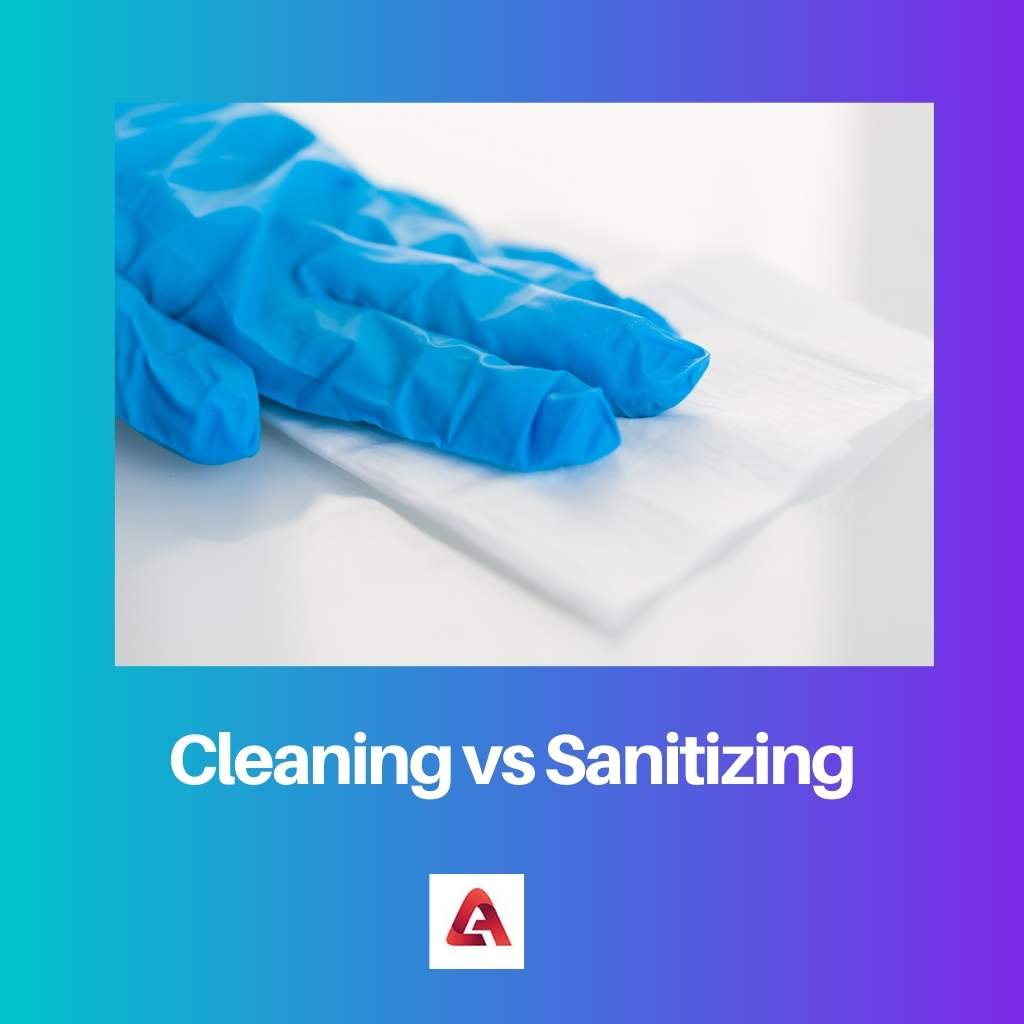Cleaning as well as sanitizing both requires the removal of germs. Both processes involve deep hygiene, and it clearly helps people to kill germs and live in a peaceful environment.
Key Takeaways
- Physically cleaning removes dirt, debris, and germs from surfaces using soap or detergent.
- Sanitizing reduces the number of harmful microorganisms to safe levels, preventing the spread of disease.
- Cleaning should be done before sanitizing to ensure the most effective germ reduction.
Cleaning vs Sanitizing
Cleaning helps remove most germs, dirt and impurities from surfaces and can be done with water, soap and scrubbing. Sanitizing, on the other hand, reduces germs to level public health codes and is done with weaker bleach solutions or sanitizing sprays. Sanitizing removes harmful bacteria.

Cleaning is a process that involves the removal of dust and other debris associated with the floor or surface. Cleaning provides a germ-free environment.
Sanitizing is the removal or refusal of the germs associated with an object. It is done to a safe level with the help of sanitizing agents that are available for use.
Comparison Table
| Parameters of Comparison | Cleaning | Sanitizing |
|---|---|---|
| Germs | Removal of germs. | Reduces the number of germs associated with an object. |
| Steps | This is the first step for a clean environment. | Sanitizing is the second step involved in the cleaning process. |
| Definition | It is the process of the removal of germs, dust, and debris. | Sanitizing is the process of reducing the number of germs on an object. |
| Removal factors | Dirt, dust, and allergens are removed. | It reduces bacterial accumulation. |
| Complexity | It isn’t complex when compared to that of the sanitization process. | It is complex when compared to that of cleaning. |
What is Cleaning?
Cleaning is a step-by-step process that involves the process of making something clean and hygienic. It is an essential step that is required to be followed by everyone to achieve a clean environment.
Cleaning, on the other hand, requires processes that involve the removal of dust and debris from the environment to maintain a hygienic surface.
Cleaning involves mild soap-based solutions to create the foam for the removal of bacteria and other germs associated with the surface, and this disinfectant will help in maintaining hygiene by significant removal of dust.

What is Sanitizing?
Sanitizing is the process of reducing the number of germs associated with a product or object. Sanitizing is followed by a set of procedures that are already set by the health ministry or aboard.
There are plenty of sanitisers that are available and are considered safe to use for individuals to sanitize their hands. Sanitization is used to remove the accumulation of any bacteria on a particular surface.
Sanitization methods are advised by the health ministry, and one has to sanitize according to the provided standard protocols. It is also, at times, complex when compared to that of normal cleaning techniques.
Sanitization is required when someone steps out of their home and returns. It is also essential to be done when someone recovers from illness.

Main Differences Between Cleaning and Sanitizing
- Clean is not complex when compared to sanitization, whereas sanitization is quite a complex process to follow.
- Cleaning involves a soap-based solution to create a foam-based surface, and then it is washed, whereas sanitization requires sanitisers that are commercially available for use.




